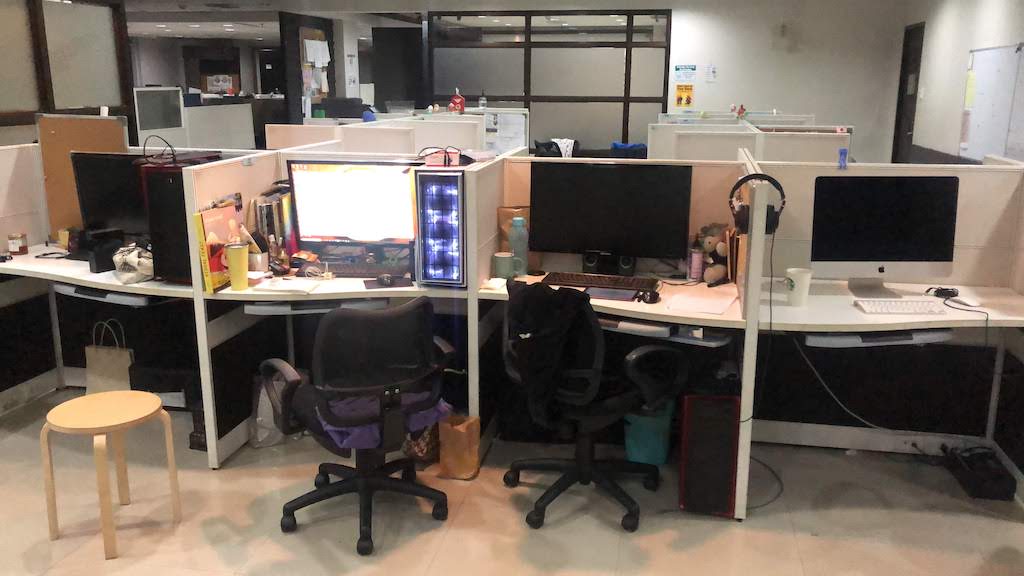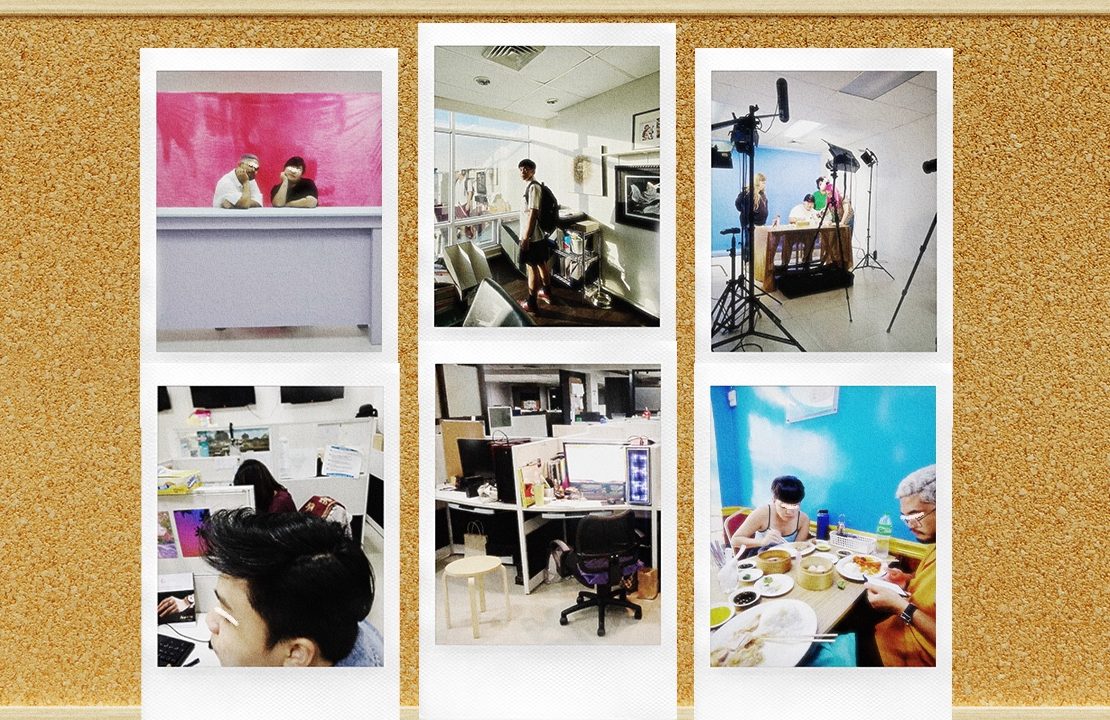A non-exhaustive list of the things I miss and don’t miss in the office, from the time I clock in to the time I clock out:
- Being greeted by the lobby guard and getting told I have a package / Arriving too early that the elevator’s not yet running and I have to take three flights of stairs
- The receptionist and her chika / The thumb scan thing refusing to let me in
- Working alone at 7 a.m. / The strict rule against air conditioning before 8 a.m.
- Free morning snack for everyone / People leaving their used plates and mugs in the sink
- All my office friends coming in / The bosses coming in
- Lunches out and free birthday lunches / Working lunches
- Going out for a shoot / Being stuck in the office while everyone is out
- Going back to the office to go out with work friends after work / Going back only to go home hours later
- In-office food shoots / Cleaning after everyone I invited to eat
- Clocking out at exactly 5 p.m. / Co-workers low-key judging me for doing so
- Walking close to a kilometer to the jeep station / Crossing the flooded office street on rainy days
- Taking a hot bath immediately after arriving at home / Receiving more work after I’ve clocked out and gone home
It has been more than a year since I last went to the office to work. I should however add that I have been to the office twice this year but only briefly.
Telecommuting is not new to our company, and yet, a full year into WFH, I don’t want to return to the office anytime soon.
Full disclosure, I received my second COVID-19 vaccine last week, but even then I don’t think I’d be comfortable returning to the office anytime soon, not when most people I will probably encounter have yet to receive theirs.
[W]hat attracts people to the office—or at least the idea of the office—is not so much the physical space, much less the “organizational structure” of a partitioned floor plan, but the people in it, their coworkers who make it more bearable, who make working from 9 to 5 (or 6) worthwhile.
Another factor is productivity. Not just the payable hours, but the hours I have to myself. Before the great reckoning, I used to wake up at 5 a.m. to prepare for work even if I am technically only half an hour (even less by car) away from our office location—the worsening Metro Manila traffic considered. I would leave at around quarter to 7 and arrive before 8 on a bad traffic day. Now, I use that time to sleep some more. I now wake up at 7 with two hours to spare before clocking in. I exercise, eat a decent breakfast, and take a bath. Sometimes I squeeze in listening or viewing time to catch up with the times. I’ve never been more productive.
What counts as ‘office culture’?
But then I wake up to an opinion piece by a publishing CEO, who fears that the reluctance of employees to return could be detrimental to “office culture.”
Washingtonian Media CEO Cathy Merrill, in a piece in The Washington Post, stated that management might consider changing employees’ status to contractors without benefits since a bulk of their supposed workload—“helping a colleague, mentoring more junior people, celebrating someone’s birthday”—is not being performed through a WFH arrangement. Part of her idea of “office culture” is anchored on emotional and often overlooked labor that she appeared to think might convince people to return to the physical workplace. Instead, this drove The Washingtonian magazine staff to stop publishing for a day.
Her insistence on in-person socialization at the cost of the safety and welfare of the employees baffles me. This screams Boomer frustrated with Zoom settings to me.
People maketh the culture—for better or worse
I listed those office things I miss and don’t miss in the beginning to illustrate that what attracts people to the office—or at least the idea of the office—is not so much the physical space, much less the “organizational structure” of a partitioned floor plan, but the people in it, their coworkers who make it more bearable, who make working from 9 to 5 (or 6) worthwhile.

The so-called “office culture”—not that I adhere to this concept in its strictest space-bound sense—is made by people, as Merrill rightfully said. What she forgot to add is, even through a different platform or form of interaction, “established practices, unspoken rules and shared values” can be formed and reinforced.
[READ: I started a new job in the middle of a pandemic. Here’s what I learned]On the upholding of office culture, it has to be said that part of it—and I hate to encapsulate something so vast in one word—can be “toxic” office culture and that part of the desire to keep it intact is an attempt to make sure that these practices that benefit people in power remain unscathed.
Forcing co-workers to perform unrelated, emotional labor like chipping in on and buying a birthday cake for their co-worker is office culture, but it doesn’t make it justifiable or right. So is working overtime without pay, seniors emotionally and verbally abusing juniors, and making employees work outside of work hours.
Subverting expectations of productivity
I don’t know about Merrill, but I trust my co-workers even if we don’t get to see each other in person these days. When she said “re-creating a workplace where a good culture of trust will be harder to build,” I am assuming that’s to undermine the validity of working at home unsupervised without a boss hovering and micromanaging.
Another reason why working from home is perfectly fine is that it is much more cost-efficient (especially for companies)—and not to mention more humane—than demoting workers to contractors with less pay and no health benefits, as Merrill proposes.
Salaried productivity, in some cases, measures up to pre-pandemic levels, if not better. This may be because—and I say this from my own experience as a well-adjusted, relatively privileged male living on his own, which might not be the same for working mothers who juggle domestic and corporate responsibilities at this time—workers are less stressed without things like commuting woes and helicopter bosses.
I do dream of someday returning to the office. I say this because in-person interaction, whether for work or to satiate our very human need to socialize, is something I sorely miss.
I miss removing my work mask to have lunch out if only for a hot hour. I miss the ease of peering into the next cubicle to find someone to talk to and take us away from the toil. I miss the non-work work hours when there is nothing to do but to wait for the clock to strike 5; the excitement of watching a momentous sports event or popular culture event together on one screen; the mundane joy of (non-threatening) office gossip over short breaks in the pantry.
That’s an “office culture” worth keeping, one that subverts the capitalist idea that we have to be serviceable workers doing nothing but create quantifiable and profitable output from 9 to 12 and from 1 to 5.




